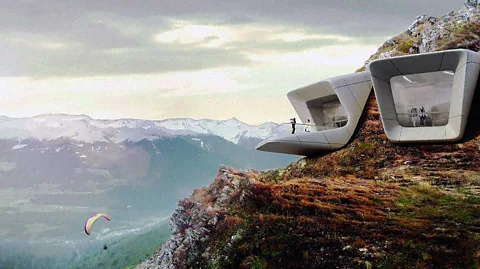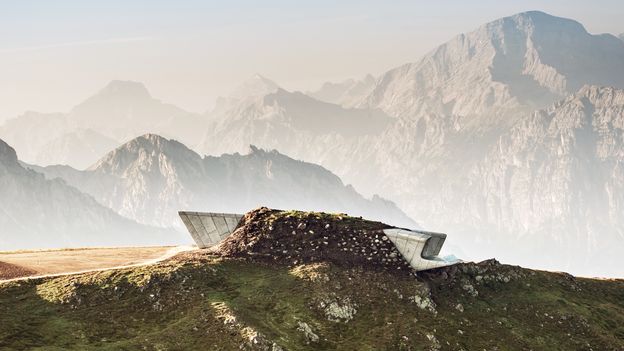The most impressive I had visited earlier that same week was Messner Mountain Museum Corones, designed by the late British-Iraqi architect Zaha Hadid. Perched on a natural balcony at 2,275m (7,463ft), near the summit of Kronplatz in the Puster Valley, it is a masterpiece of non-linear cast concrete architecture, with cavern galleries and fragmented geometries that mimic the rock and ice formations of the Dolomites where Reinhold frequently played. Strangely, the achievements of the man whose name was on the museum’s door are little more than whispers throughout the galleries.
 Messner Mountain MuseumsZaha Hadid’s spectacular Messner Mountain Museum Corones is perched on a natural balcony at 2,275m (Credit: Messner Mountain Museums)
Messner Mountain MuseumsZaha Hadid’s spectacular Messner Mountain Museum Corones is perched on a natural balcony at 2,275m (Credit: Messner Mountain Museums)
While these attractions are now relics of the past for Messner, the mountains remain his lifelong passion, as does his fight to help the next generation stay tethered to wild places. “Adventuring is not so old, maybe only 200 years,” he explained, as we continued our tour. “But the relationship between man and nature has changed, and it’s important the historic traditions of mountaineering are not forgotten.”
From the balcony, it was up another level to the house’s focal point: the old cable car platform that’s been transformed into a gorgeous, liminal space between the mountains and the climber’s most prized mementoes. Outside, a 180-degree panorama unspooled. Inside, climbing boots and cameras, harnesses and helmets enjoyed well-earned retirement on metal racks. In a series of glass cabinets were letters, diary entries and pictures of frozen fingertips and frostbitten toes, as well as expedition documents, many revealing details about his close relationship with his younger brother, Günther, who was killed in an avalanche while the pair descended Nanga Parbat in 1970. It was a life-changing event that has haunted the climber every day since.
“So many bitter memories,” he mumbled, tailing off. Above, on a vast steel gantry, Italian, German and English phrases carried messages of hope. “Endless thought, open mind.” “Ever onward with a slow step.”


